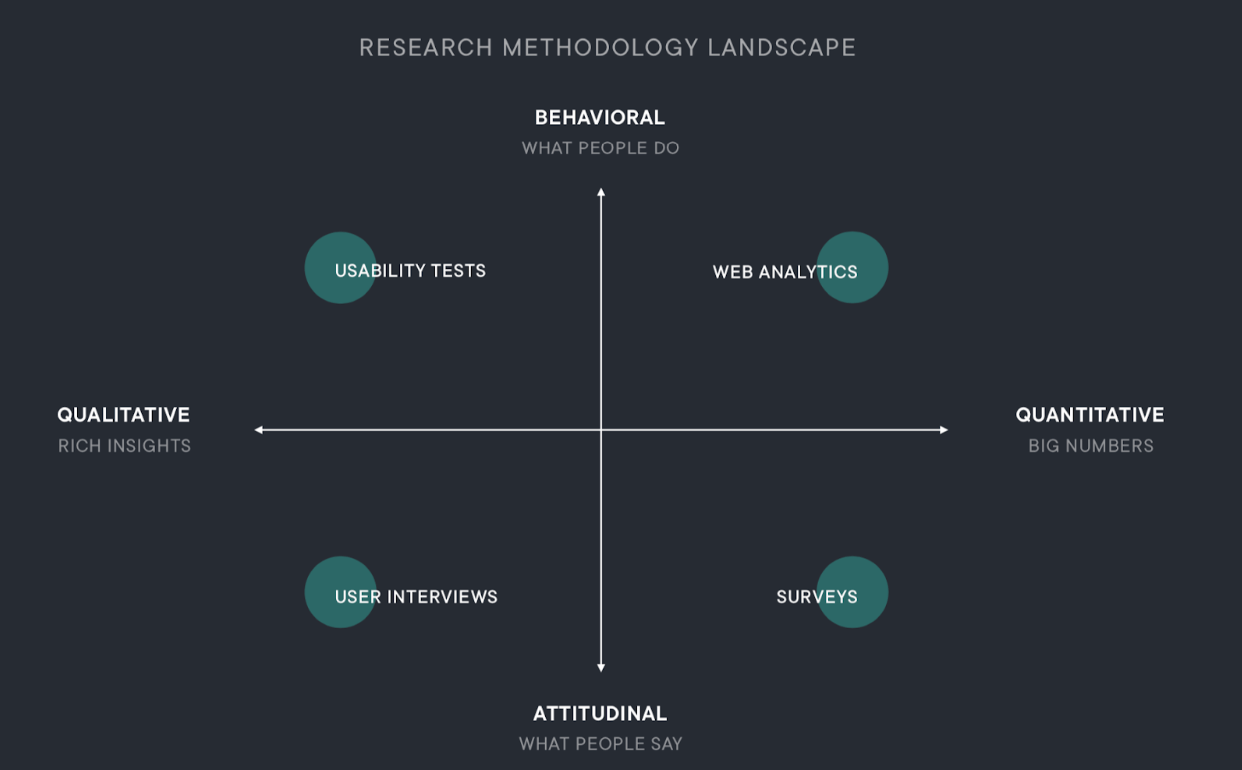User research methods can give your organization insight into what users need most. If your business doesn’t have a department devoted to user research (most don’t) you may not know what your ideal users are looking for in a specific product or service. This gap in what they want and what exists is where opportunity lives. User research gives you a map for how to get there.
As laid out in our discussion of design thinking, user research is the point in the process where you survey the users about their own experiences by acquiring divergent data about their actions and thoughts. The broad range will give you many ideas you probably aren’t thinking of or solutions you never thought to solve for. The user is king and you must use their insights as a beacon during the process.
By the end of this piece, you’ll have an understanding of what user research tools and data look like so you can start to plan what your own team’s process will be.
The goal of user research strategy is to make something great
The user research process is not an opportunity to prove a theory—it’s a way to develop a deeper understanding that will produce a theory. As we discussed in this piece, kicking off a project with user research ensures you are building something valuable to your users. Building something no one wants or uses is a waste of your company’s resources. While it costs money to engage in user research, it costs much more money to build something people don’t want to use.
User research methods: how to get the best insights
The axis on the image above shows the range of variables that go into user research and the tools that can get you those data points. Different tests can get you different data points, all of which can be useful depending on what your goals for research are.

We’re going to break down the image above across the axis of research methods and the data they produce from Behavioral data (a users actions) to Attitudinal data (a users feelings about their actions) and Qualitative data (rich, nuanced reasoning) to Quantitative data (big, general statistics and actions).
Behavioral data: what people do
Some of the easiest data to accrue from users is behavioral. Tracking what they do in the landscape of analytics and data tracking is one of the biggest industry booms in the digital landscape. Almost all users of an app or visitors to a website automatically opt into having their activity tracked by the administrators of that site. From that data, a company can see what people do en masse and draw conclusions about how to make them do more of the things they want and less of the things they don’t.
This kind of data found in things like usability tests or website analytics are good for improving something you’ve already built.





